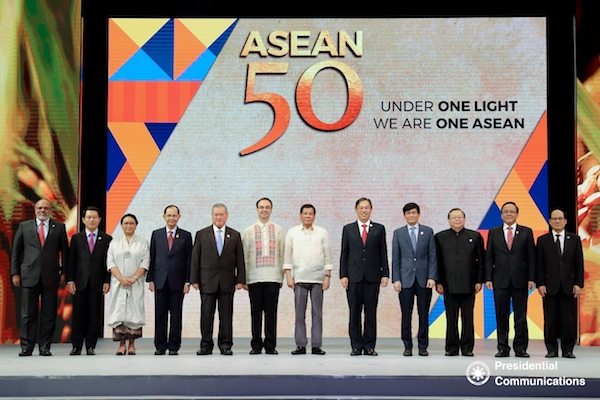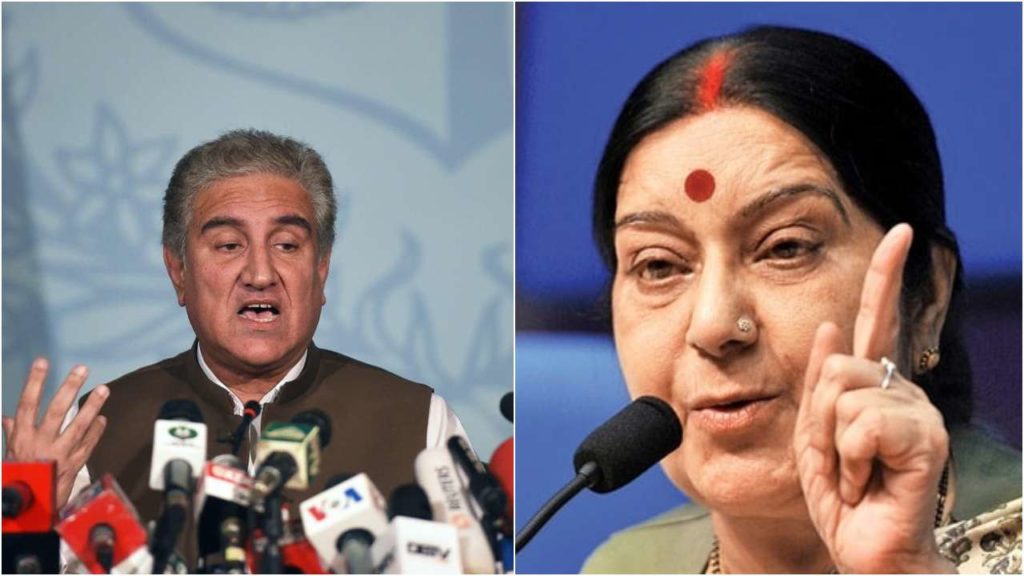First article in this series
For years, the upper echelons of the business world has prided itself on being the guardians of doctrine, policy, and strategy in organisations. However, ever wonder how many failed initiatives lead to one great one for any corporate leader? Many! But only that one success is remembered while the failures forgotten what a short memory we have. A statistician would term this a poor result at best. Consequently, it is unlikely that the ideas of the troika of doctrine, policy and strategy have bedded in well and uniformly across the corridors of power in the corporate world. Nevertheless, there are always some positive cases that can be used as an example to prove this hypothesis.
Organisational doctrine generally originates from the chief executive officer; i.e. the man in charge. On one hand, a motivating doctrine fit for the times can electrify the employees to do something spectacular and legendary. On the other, a doctrine wrested in history, out of tune with contemporary understandings and without any personal belief to support it is destined to fail miserably. Steve Jobs is a good proponent of the former. There isn’t a hall of fame of visionaries but if there ever was Steve Jobs would definitely figure in the top half. He has done very well at Pixar and Apple but what was his doctrine, his sets of beliefs that teed him and his companies for success? Recall that doctrine need not be a written document. It could also be a set of beliefs that permeate through the organisation. For Steve Jobs, it was mostly likely “design simple, build great”. That is the reason Apple’s “Designed by Apple in California” carries so much weight in the industry. Even Jobs first stint at Apple was remembered for trying to simplify the personal computer and to make it affordable for the general population. And he showcased the same zeal and vigour at Pixar and then at Apple in his second spell.
In the business world too, policy is deemed as a particular direction or course chosen from a list of alternative options. This is crafted at the top of the organisation by a group of leader’s privy to the doctrinal path of the CEO. Any amount of correction at the lower levels in the organisation cannot rectify the poor choice in direction at this level. Corporate policy decides, broadly, ‘where to go’ and what the end result will be. Extending the case study, the grandest policy for Apple was set by the leadership team under Steve Jobs and could be explained as “creating a computer for every man, woman & child”. It was a galvanizing vision which gave the greatest of inspiration to all Apple employees. Note that there can’t be a disconnect between doctrine and policy or else they will end up ‘pulling’ the organisation in different directions. So much so that the company can start to ‘come apart at the seams’.
Strategy in the corporate environment is a set of long-term proposals that orchestrate any given policy. This, by and large falls under the remit of the managers notice not leaders and is supposed to be always in line with the stated policy. This is the ‘how to get there’ part of the story and includes details, roadmaps, and paths to the desired outcome. While policy is unitary strategies can be multiple. Strategies are also expected to highlight tactics which are operational level actions that support one or more strategies. These are very specific, clearly defined, and explicit instructions that help put the strategy into action. This stage is the ‘detail needed to get there’ section of the narrative and is usually the concern of the operational managers within an organisation. One of the strategies to execute the Apple policy of providing an affordable computer to everyone was the conceptualization of miniature computers; i.e. that PCs were not the only computers people could use and that computers could also be smaller in size but just as powerful and useful. The tactical approach for this strategy also included the iPhone and the iPad. And the rest, as the axiom goes, is history.
Strategy is used to execute the policy. Policy stems from the organisational doctrine and philosophy at the top. Therefore, logic dictates that doctrine must come first and the organisation can only succeed at the behest of a relevant and motivating doctrine. Continuing with the Apple example, this opinion piece leaves you with the following thought from Steve Jobs “You have to trust in something your gut, destiny, life, karma, whatever. This approach has never let me down, and it has made all the difference in my life”.
Second article in this series
A recommended corporate policy tripod to survive globalization!
Thomas Friedman defines globalization as the integration of markets, finance, technology and telecommunications in a way that is enabling each one of us to reach around the world farther, faster, deeper, and cheaper than ever before. And at the same time globalization is enabling the world to reach each of us farther, faster, deeper, and cheaper than ever before. To top it all globalization also creates super-empowered people. This accelerates the operations at global companies to a hectic pace. Their employees shall be making decisions at a pace faster than ever to compete with others. Hence, and as prescribed in the originating opinion pieces in this series, there are certain courses of action that are not only helpful but are essential for a global organization to manage the onslaught of globalization. To that end the following write up recommends a policy tripod on which the structure of a global organization can be setup.
Consensus Building
Generating a consensus is difficult in a local organization at the best of times. It is exponentially difficult in a global organization. With sprawling offices and conducting business across the globe comes the added headache of some very intangible dimensions. Regional offices cannot exist in isolation. They are entwined into the local cultural and social landscape. Hence personnel in these regional locations display mannerisms that are indigenous to that region or location. Similarly, the local politics of the region also affects the traits of the working population. All this means is that the regional components of a global organization might be operating on different wave lengths owing to their local environment. Hence generating consensus on a global way forward for the organization might be difficult to achieve.
Consequently, a specific policy of consensus building will tend to rectify this situation where different actors within the global, as well as regional, organization push for generating an agreement between disparate groups of the organization and creating an atmosphere where common ground, rather than localized differences, is sought after.

Diffusing Empowerment
Empowerment is a key facet of a flexible, global organization. In a global organization personnel are spread across the globe in different time zones. This results in a greater turnaround time on almost all actions. A manager based in the Americas working on a solution with development resources housed in Australia must wait for some time before he can get information that allows him to make a decision. Similarly, the reverse is also true. This induces skewed timelines, extended working hours and unmitigated resource constraints. All of which amounts to affecting the bottom line, not to mention other intangibles such as client satisfaction, brand name and company prestige.
A purposeful policy of empowerment will allow an environment of confident decision making to prosper in the global organization. This would allow regional resources to take make wise choices on the spot rather than waiting for a 24-hour turnaround for more information and confirmation. Although difficult to implement this policy will be helpful in environs where inherent decision making is weak. It will also have the added benefit of grooming confident individuals in the global organization who will help the organization and in turn the business to move forward. Initially mistakes might be made but in time this would be curtailed in favour of wise decisions. As the adage goes, good judgement comes from experience and experience comes from bad judgement. As a corollary an empowered global organization will also fare well in front of clients, partners, competitors, analysts and investors.
Embracing Diversity
People are always a key to a successful organization. This piece of wisdom is even truer in a global organization. As the personnel stem for a variety of diverse cultures, regions and locations it is important that diversity is encouraged and embraced within a global organization. One of the biggest advantages of this smorgasbord of personality and culture is that it brings with it different approaches to the same problem. Different people view things differently owing to their cultural or social leanings. This can be beneficial in a global organization where a problem can be solved in a multiple of ways. With its slogan the world’s local bank HSBC embraces diversity to the hilt. It claims that it uses local knowledge to not only solve local issues but also to help regional problems elsewhere. Diversity is a ‘use it, don’t lose it’ feature.
A focused policy of encouraging and embracing diversity will allow the global organization to benefit from the rich experience, including the differential problem-solving techniques of the various organizational regions and the people belonging to them. An upshot of this policy will be that local knowledge will always be available for the organization to use in expanding the business in that region.
The time ahead will bring different challenges but the assault of globalization will not recede anytime soon. Thus, the only organisations to survive effectively will be the ones that have thought long and hard to include CDE Consensus, Diversity and Empowerment policy options in their vision for the future. Nothing less will suffice!
Third article in this series
Google and its agility are the way forward
In recent times, no other company has grabbed the imagination of the people and wall street more than Google. It has become synonymous with ingenuity and innovation and is known for working on a myriad of projects ranging from mapping the surface of Mars to digitising most of the available published content. In fact, at any given time Google is working on over a hundred initiatives with great vigour and focus. By the same token many of these initiatives are dropped routinely in favour of others. Therefore, the question arises how does Google manage this high rate of churn and still be commercially viable? The answer lies in the overarching policy formulated at the top levels of its organisation structure. In one word agility!

Even when Larry Page and Sergey Brin started out in 1995 their mission was relatively clear to organize the world’s information and make it universally accessible and useful. This doctrine has permeated throughout the organisation since and has enabled Google to become the nimble enterprise it is today. The policy of agility also speaks directly to the doctrine of Google’s founders as it allows their mission to become reality in these dynamic and fluid times.
As original pieces in this series have articulated policy is a galvanising vision provided by the top leadership of an organisation to steer the company towards greatness. Google is not an exception and imbibes this truth to a greater degree by establishing agility as an overarching vision for the company. Consider.
Google has been a software business for quite some time but it has adopted some of the successful software paradigms in other facets of the organisation as well. Strategy being one of them. For long, strategy was thought to be a domain needing careful deliberation and maximum information. Recent times have deemed otherwise and Google has moved strategy to the agile way of working as well. Google Ventures (GV) is the venture capital arm of Alphabet, Inc. Google’s parent company. It has established a five-day method which teaches to bypass stifling bureaucracy, “analysis paralysis” and endless debate cycles by using agility in product design, go to market and even strategy formulation & execution. The five days consist of mapping out the problem, sketching competing solutions on paper, making difficult decisions to turn ideas into a testable hypothesis, hammering out a working prototype and finally testing in real live scenarios. This initiative has been so successful that GV is helping other firms, especially start-ups, to do the same and bring the policy of agility to all corners of the organisation.
Value creation has always superseded wealth creation at Google. The idea is so simple that it could be deceptive create something of value and that will lead to the conception of wealth. Most companies think the other way around. They think of profits before value; i.e. the first set of questions they ask is, how can we make money from this product or service? How can we create wealth for our shareholders? On the contrary Google focuses on value. But where Google has taken this model of value creation to another level is to create value fast. This is yet another leaf from the agile philosophy develops quick and fail fast. For the many initiatives that Google has been successful at, there were many that got reduced to the dust bin of history. Ironically Google these failures and you will find many a site that will list out the ideas that didn’t ‘make the cut’. He good thing about this? Google decided swift and fast on abandoning these not because these couldn’t make money but because they couldn’t create value.
Ernst & Young (EY) has dubbed 2015 and beyond as the age of agile innovation with only companies that place innovation at the heart of their purpose transforming experiences, processes and business models capable of winning. Google fits this bill completely. Innovation was always a hallmark at Google. But not just any innovation agile innovation at its best. ‘Gogglers’ are encouraged to experiment, collaborate and maximise learning. They are invited to strive for agile and innovative processes and ideas while not sweating the uncertainty. The result is that there are a lot of ideas that have made their way from the lab to the commercial fore at Google. Keeping the notion of agile innovation in mind, Google have done away with traditional planning and management which was rigid, directional and prescriptive at best. Now the focus is on fluid and self-organising systems which can react to the ever-changing nature of the business and technology landscape to keep up with the times. The Google leadership has also come to accept the high and volatile nature of change that is a crucial pre-requisite for any agile innovation framework to prosper.
Over the years, Google has shown that an agile mindset will always overcome the trials and tribulations of modern-day chaos. It has orchestrated the three realms of corporate thinking doctrine, policy and strategy efficiently to settle on a grand vision of agility. It has taken a leaf out of the agile philosophy. It is about time that corporations wanting success take a leaf out of Google’s playbook!

Fourth article in this series
Singapore, A Text Book Execution of National Security Policy!
The recent breakthrough summit between Donald Trump and Kim Jong-un took place in Singapore. The fact it was chosen over other locations is not surprising because as far as city states go, none is as successful as Singapore. It ranks near the top of the list in many worldwide rankings of diverse spheres. Both IMF and World Bank rank Singapore 3rd in the world for GDP per capita. The UN holds it at 9th when it comes to human development index. Singapore’s index of economic freedom is 2nd globally as per the Wall Street Journal. World Bank puts it at 2nd for ease of doing business just behind New Zealand. And it is also deemed as the most liveable city for Asian expats. Considering that it is quite a nascent country, only gaining complete independence in 1965, this is quite a feat. How did Singapore get here in such a short span of time? The answer, a text book execution of national security policy while aligning it with broader concepts of national purpose and national interests!
As former opinion pieces in this series have suggested policy is a motivating vision with specific ends and objectives to be achieved. The national security policy of Singapore is no different. It has been put forth by the political leadership of the country and has been followed by vigour since the inception of the city state. That this national security policy has worked wonders is not disputed what is amazing is how it has been linked back to national purpose and national interests of Singapore while keeping it in sync with the underlying strategies to achieve its policy aims. Consider.
If Singapore’s national security policy was to be summed up in one sentence, it would be this honourable survival and consistent economic growth through co-habitation at home and abroad. The objectives of this policy are four-fold. One, survive respectably in a hungry region where there are bigger and more powerful neighbours and countries. Two, turn Singapore into a regional economic power house to ‘punch above its weight’. Three, strive for regional peace first and global peace second. Four, maintain and increase quality of Singaporean life.
Note that this national security policy has not been born out of isolation. It stems out of the defined national interests of the country which in turn, take its inspiration from the national purpose.
National interests are broadly defined as a nation’s goals and ambitions which are vital for its survival. These are often referred to by the French expression raison d’état, which means reason of state. The aforementioned national security policy furthers five distinct Singaporean national interests. First, the country needs to be a successful and vibrant economy. Second, it should not become a vassal state meaning Singapore cannot be bought nor can be bullied. Third, aim to be a friend to all, but an enemy of none. Fourth, promote a global world order governed by the rule of law and international norms. Fifth, act as a credible and consistent partner.
These national interests don’t act in separation and line up directly with the overall national purpose of Singapore. Colloquially, national purpose is defined by the French phrase raison d’etre. This simply means reason to exist. In political terms it highlights the reason for a nation to be. For Singapore, it is reflected in the national pledge which focuses on three tenets. Firstly, Singaporeans are one united people regardless of race, language or religion. Secondly, the republic will be a democratic society based on justice and equality. Thirdly, achieve happiness, prosperity and progress for all within this nation. This serves the de-facto secular national identity of Singapore.
It is a great achievement of Singaporean leaders to have the national purpose feed into the national interests which subsequently leverage the national security policy. The harmony between the three is difficult to obtain let alone to maintain it after all these years since 1965!
However, the story of Singapore’s success is not complete without discussing the underlying strategies that execute the policy objectives stated in the national security policy. Recall that previous op-eds defined strategy as ‘means to an end’. Those ends being the aims of the stated policy. This is also true in the case of Singapore as it embarked upon the following critical strategies to reach its policy goals.
Strategy one is maintaining security within and outside of Singapore. This is the foremost strategy to safeguard national interests and achieve national security policy aims. To that end, Singapore has devised a national security strategy called ‘the fight against terror’. This is because Singapore believes that transnational terrorism poses a serious and prolonged threat to Singapore’s national security. After experiencing a spate of terrorist acts in the past and considering the convergence of local and global terrorist outfits, this strategy suggests a three-prong approach to national security. Prevention using intelligence and inter-agency co-ordination to eliminate security lapses. Protection uplifting the capacity of homeland security. Response Singapore must have the means of responding swiftly to restore the country to a state of normalcy in the event of a terrorist act.

The second strategy for Singapore has been its desire to play an energetic role in the comity of nations. On a regional and global level Singapore has reached out to neighbours and countries to become part of initiatives to achieve peaceful co-existence. It was a founding member of ASEAN in 1967 to seek strong co-operation within countries in South East Asia. Singapore has also been an active WTO member since 1995 and a member of GATT since 1973. Since independence, it has been a member of the UN with non-permanent Nationals Security Council seat.
Strategy three is to become the trading hub for the region especially considering that Singapore is sitting at the mouth of the Strait of Malacca. For this to happen, it has created a very strong infrastructure and shipping environment. So much so that 80% of global oil shipping happens through its state of the art port. Furthermore, 8 out of 10 of the world’s leading commodities trading companies have a presence in Singapore and the government is continuing to strengthen the ecosystem to maintain its status as a leading trading centre for commodities.
The fourth strategy is to become ‘business friendly’ which Singapore has focused on since its inception. This has also resulted it in becoming a financial hub for the region rivalling Hong Kong. This is likewise in part because of the financial security it provides for the capital of all Asians at large who cannot protect their wealth in their own country. In that aspect Singapore has become the ‘Switzerland of Asia-pacific’. Moreover, large MNCs and global chains have setup shop in the country therefore increasing international stakes and almost guaranteeing stability of Singapore.
In conclusion, to say that Singapore is a regional success story would be unfair. It is a blueprint for global success that other developing nations should emulate. More importantly it is the way Singapore has setup its national security policy to further its national interests and justify its national purpose that should be commended. And that is what emerging countries should take to heart. Anything less will not suffice in these trying times!
Fifth article in this series
Can a policy of inclusionism help Pakistan and India?
Ponder upon the following European political state for a moment. Italy, inconclusive elections and months of uncertainty led to two parties the anti-establishment Five Star Movement and right-wing League forming a coalition government. Germany, the far-right Alternative for Germany (AFD) entered the federal parliament for the first time. Austria, the ultra-conservative Freedom Party (FPO) became a junior partner in a coalition with the conservative government. Sweden, the anti-immigration Sweden Democrats (SD) made significant gains in the 2018 general election and won about 18% of the vote.
What do all these happenings have in common? A triumph of the policy of isolationism in the face of great global challenges! Other key examples of isolationist attitudes gaining ground are Donald Trump securing the American presidency and the Leave vote winning the BREXIT debate in the UK.
Even though isolationism is at odds with globalisation, it still seems to be gaining momentum. The forlorn internationalist policy of inclusionism is taking a battering!
Will Pakistan and India continue to follow suit? Can they buck the trend? The answers may not be as straight forward. Consider.
Earlier opinion pieces in this series have conclusively defined policy as guidance that is directive or instructive i.e. it is clear in stating what is to be accomplished. It is a galvanizing vision that describes the end goal. Unfortunately, an isolationist policy also defines the end goal decisively; e.g. look inward, engage less, be selfish, country first world later. What it fails to recognise is that this is a lose-lose scenario because in this globalised world no country can be an island! Figuratively speaking, of course.
If the recent sabre rattling is anything to go by, history does not side with Pakistan and India. In the latest commotion, India abruptly called off a ‘pre-agreed’ meeting between its foreign minister Sushma Swaraj and her Pakistani counterpart Shah Mahmood Qureshi that was to happen on the side-lines of the United Nations General Assembly. A diplomatic row erupted over who was to blame and for what. Then the combative rhetoric began. Bipin Rawat, India’s army chief, called for stern action to avenge the barbarism that terrorists and the Pakistan army have been carrying out. The director general of ISPR, major general Asif Ghafoor, said that his country is “a nuclear nation and we are ready for war, but in the interest of the people of Pakistan and the neighbours and the region we want to walk the path of peace”. This has been the spectacle almost since the independence of both nations in 1947.
These isolationists and destructive attitudes must stop! That can only happen if in one word, the stated foreign policy of both countries is inclusionism. Although the end goal of this policy would be inclusionist in nature but any policy shift is not complete without stating the objectives to be achieved. That is where the rebooted national security policy as discussed in prior op-eds can help. Or, more aptly, the objectives of a foreign policy of inclusionism should at least parallel that of the reinitiated national security policy as below.
One, exist honourably in a volatile region and ensure transparent writ of the state to protect its people from all internal and external threats. Two, convert respective countries into economic and social powerhouse to safeguard and increase the quality of life for all citizens. Three, promote diversity, liberty, equality, and a culture of tolerance. Four, strive for regional and global peace through amicable co-habitation and adherence to international norms.

In Shah Mehmood Qureshi and Sushma Swaraj, Pakistan and India have two capable and forward-looking individuals but an exclusion-based policy at home shackles their beliefs and thus attitudes. They are articulate, able, and experienced and can ensure that the full weight of their ministries is behind this foreign policy of inclusionism, if hopefully chosen, while aligning with the respective national security policies. Nevertheless, three great historic and geo-political compulsions might scupper this policy shift.
First, almost 70 years of bitterness and acrimony is not easy to do away with. But this needs to be done for the sake of future generations and prosperity of the sub-continent region in general. Second, Imran Khan’s government has come to power for the first time. It will be difficult for it to be ‘seen as being soft’ on India. Though, if this foreign policy of inclusionism is not India-centric then it may become more palpable for the electorate. Across the border, Prime Minister Modi is also facing an election in 2019, with the opposition Congress party right at his heels. It will be easy to give in to the tendency of stoking isolationist and anti-Pakistan sentiments to carry the elections but will take a brave man to balance political needs and regional requirements of normality. Selfish leanings might have to be sacrificed at the altar of the greater good. Third, governments on both sides of the divide are filled with hawks instead of doves. These hawks have imbibed the anti-neighbours notion for quite some time and it will be difficult for them to let this go. Government heads should jettison the hawks and embrace the doves. Only then the policy of inclusionism can truly fly.
This is a tall order indeed but even a journey of a thousand miles starts with the first step. If the above mentioned constrains can be mitigated and appropriate strategies constructed to execute this policy, there is no reason that inclusionism may not reap the benefits for both Pakistan and India.
President Truman surmised it best, “all will concede that in order to have good neighbours, that applies in every field of human endeavour”. He couldn’t be further from the truth!





